This post contains affiliate links.
This is the story of Route Del Sol, an all-electric, solar-powered motorhome. This DIY motorhome build is very likely the most powerful solar-powered campervan in the world today and this is how it came to be.
Since that very first exchange with the ticket booth operator, I have grown much better at explaining just what it is I am driving. In the most technical way possible (for me) I exclaim that, “this is a fully electric 2010 International EStar, it’s an ex-Pacific Gas & Electric owned cargo van converted into a DIY solar-powered electric campervan.”
Don’t miss other interesting stories like this, join our FREE Tiny House Newsletter for more!
Building the world’s most powerful solar campervan
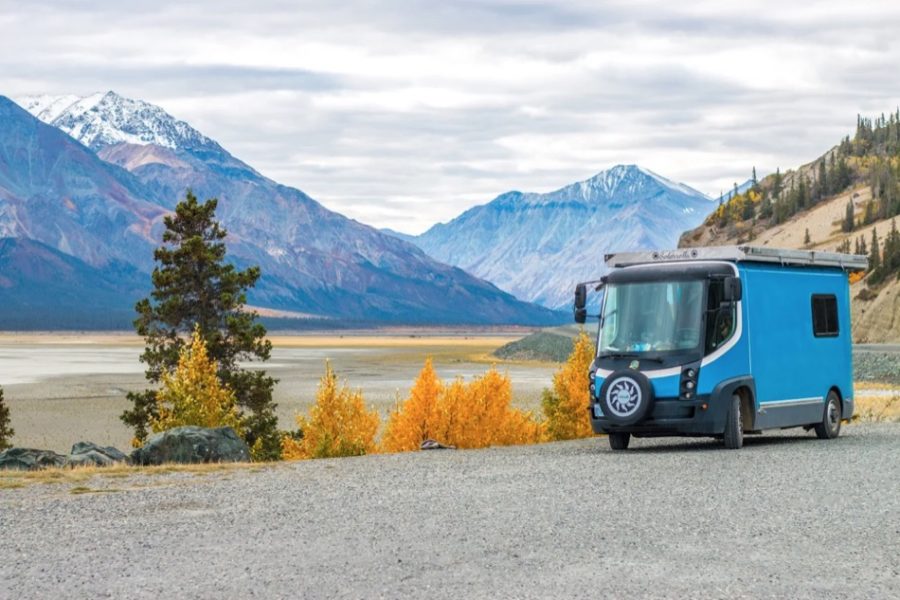
Images: Route Del Sol
By Joel Hayes and Keegan Taccori
I can clearly remember how I define the very beginning of this adventure. It was the end of summer, and I was about to hop onto a ferry embarking from Bellingham, WA. I had just finished building the draw slide mechanism encasing the solar panels, which allow me to deploy and retract the panels – an essential piece of equipment for charging the van throughout my journey, but more immediately in my destination in Haines, AK. I did these finalizations in an alleyway beside my friends house just north of downtown Seattle, WA. This kind of spontaneous “workshop” was not unlike any of the previous spaces I’d used for the entirety of the build. A majority of the project was carried out in the front yard of my friend’s place in Ashland, Oregon. My van was completely untested – well the most important part anyway – which was the van’s fuel source, the solar array. My team and I had set the ambitious goal of completing the conversion in just over two months, and, well, let’s just say the van was far from finished by the time I awaited that boat. Considering how chaotic everything was, I’m surprised we even managed to ready the van even to the point it was within the two month period.

Images: Route Del Sol
Picturing the van in the condition it was in at its most functional state compared to what it was when I loaded it on the ferry to Alaska is kind of a scary thought. I don’t know if I’d want to relive that part of the journey again. It’s clear now I didn’t really understand what I was doing, nor what I was driving. I only knew this was going to be an epic adventure, and I needed rest because the build nearly killed me. And who knows, I might have to run away from hungry grizzlies when my van runs out of energy in the middle of nowhere, in Alaska and the batteries won’t recharge.
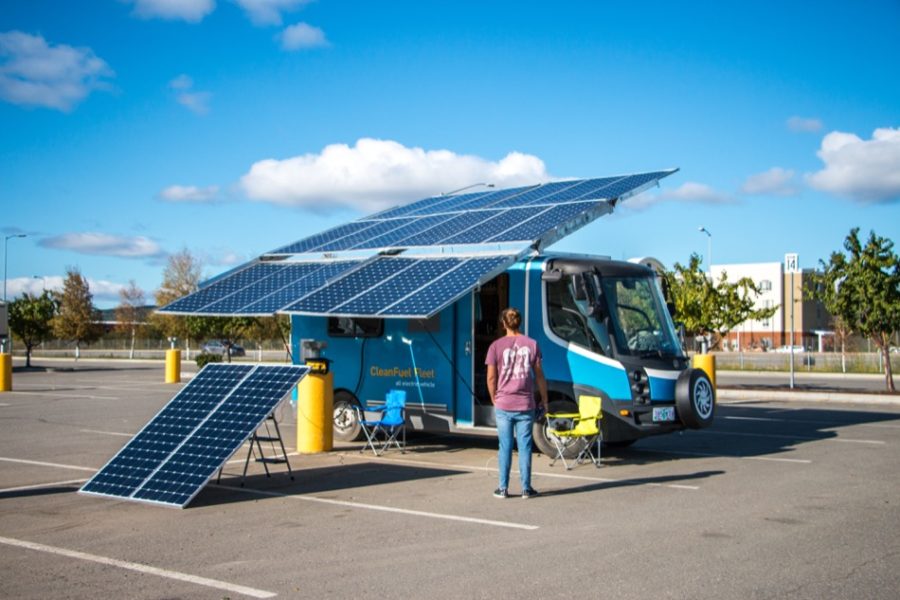
Images: Route Del Sol
My journey had really just begun, but something else happened as well. The trip to Alaska was when I had my first of many opportunities to describe my rig to a curious observer. Fatigued, stressed and confused, my answer to this person was verbatim: “This is a 100% solar-powered campervan.” I didn’t feel I had the energy to explain to the Alaska Marine Highway System’s ticket booth operator what I was operating exactly, but I quickly realised this was what my job would become over the next few years of my life. “Fully solar-powered?” he replied with a huge smile on his face. “Yeah, 100-percent electric and 100-percent solar-powered,” I insisted. His following question is one which still to this day makes me laugh every time, “So…There’s no gasoline in there?” I’ve gotten better at answering, but at the time, I think I simply explained that it runs off of batteries charged entirely by the solar panels.

Images: Route Del Sol
There didn’t seem to be much of a hurry for this guy. Maybe the ferries were closing down for the season – the hoards of summer overlanders likely already headed south from their once in a lifetime Alaskan summer getaway back to the lower (warmer) 48 States? My question was answered with his next statement. “Mid-August is a bit late to be starting a trip to and from Alaska. Especially in a solar powered campervan.” I knew this. I’d been warned by several people that the weather in Alaska can become “wintery” pretty quickly. He went on to ask me where in Alaska I was planning to go, to which I responded, “the Arctic Circle on the Dalton Highway.” He looked at me exactly as if he knew how I felt on the inside, a little bit CRAZY, then he wished me luck and sent me to Lane 8.
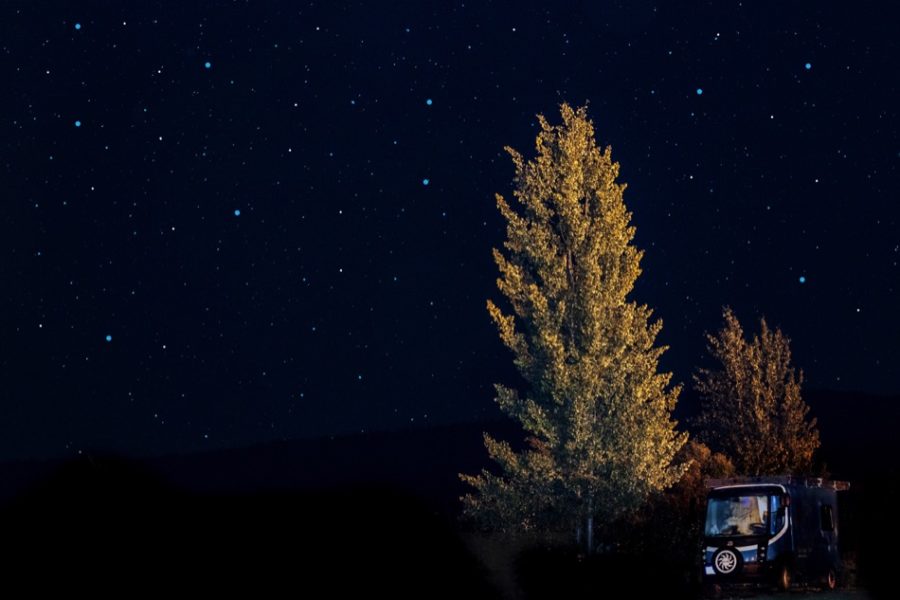
Images: Route Del Sol
Someone might ask what inspired me to take this sort of a trip, in a vehicle such as mine. And there is an answer, but it probably isn’t as simple as a singular spine-tingling quote which might be expected from me at this point. Before offering my reasons to the best of my ability, I’ve tried to rephrase the question a bit to say, “Why do you get to do this but not everyone else?” Or, “Why have I never done something like this?” There are a number of reasons why someone might want to know where I found my motivation, aside from pure curiosity. For one thing, it’s quite possible a large portion of the population isn’t actually looking for inspiration. They’re looking for reasons why they haven’t done this – whatever this is – themselves.
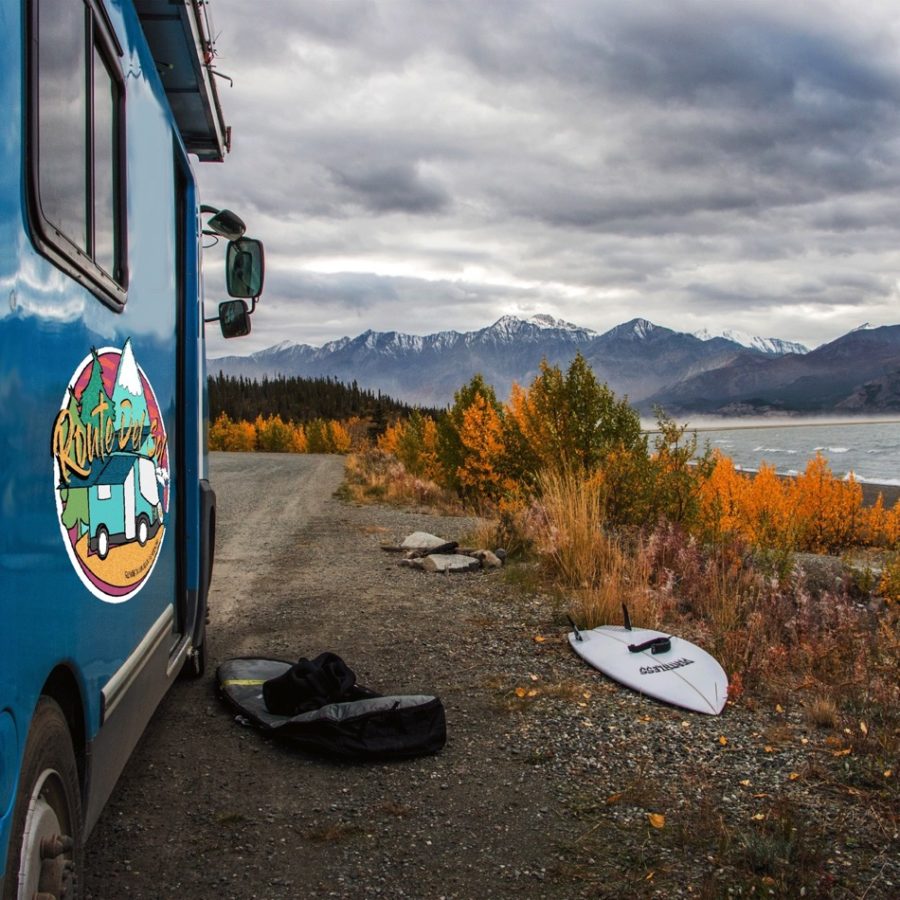
Images: Route Del Sol
Sometimes we spend our whole lives waiting to be inspired enough to do something we’ve always wanted to do. Rather than taking the accomplishment of our crazy ideas onboard as our duty to humanity, we instead wait for a moment. Finding out that real life doesn’t always provide us with these “catalytic events”. Sometimes you get to a point and realise life isn’t like the movies. This isn’t visceral or surreal, this is it, unless I do something about it. Not to sound cliché, but influence is everywhere. Some of my greatest ideas have come to me while doing the most boring or mundane activities. My best ideas can appear while I’m washing the dishes. Don’t get me wrong though. I love being inspired by people like Charley Boorman saying things like, “What have we let ourselves in for? I mean this is [really] back and beyond absolutely nowhere. I mean It’s just extraordinary…” to his co-rider Ewan McGregor in the adventure series the Long Way Around. Seeing them in awe definitely helps, but most of what I do comes from a lack of excitement in my life. Boredom really. I decided to do this trip because I was bored. And who the hell has enough spare time to be bored with life?
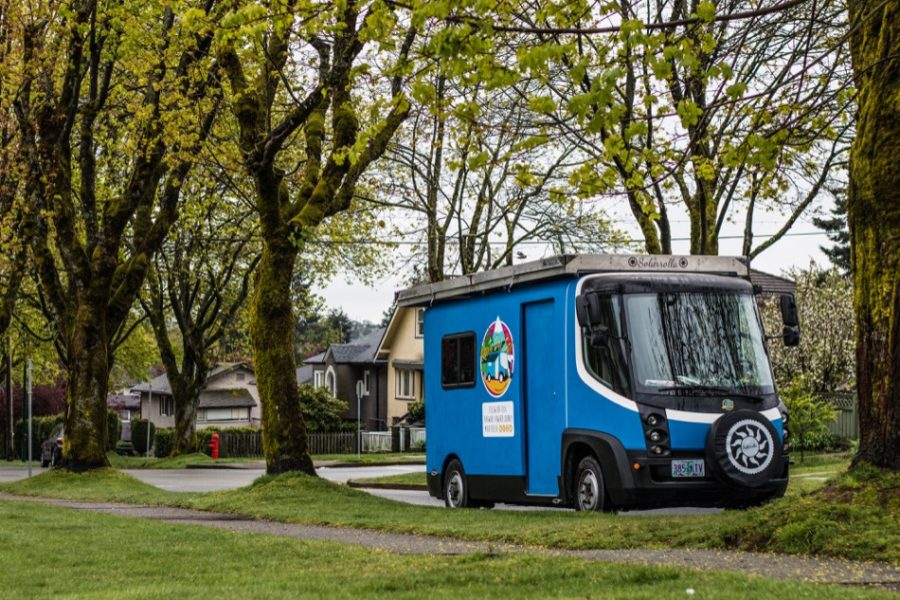
Images: Route Del Sol
Since that very first exchange with the ticket booth operator, I have grown much better at explaining just what it is I am driving. In the most technical way possible (for me) I exclaim that This is a fully electric 2010 International EStar, it’s an ex-Pacific Gas & Electric owned cargo van converted into a DIY solar-powered electric campervan. It’s a bit of a mouth full and almost never returns a satisfied response from the curiosity within whoever is asking. I wonder sometimes what it must have been like for Karl Benz in 1886 trying to explain what exactly was the “Motorwagen” one of the world’s first cars that he was operating in the streets of Germany. So in understanding of my own natural curiosity I explain in as much detail as necessary what this Electric Blue Spaceship is.

Images: Route Del Sol
Originally, this strangely shaped vehicle was a collaboration project between a few automotive manufacturers out of the USA and UK – the UK model being a Modec EStar and the USA version being an International Navistar EStar. As the world’s first fully electric cargo vans they were kind of a big deal in the electrification scene. The Story of how I came into possession of my own International EStar began in 2008 as the first generation of USA based EStars rolled off the production line in that year, and after a short period, its successor, the 2nd Gen EStar, kicked-off in late 2009. Unfortunately, the line came to a quick conclusion in 2010, due to low demand, and so, the quest to create a functional, affordable, fully-electric production cargo van in the USA seemed to have died before it really got going. There were a few companies who took advantage of the huge tax and carbon credits which came with the purchase of an International Navistar EStar, like FedEx, Canada Post and PG&E, to name a few. Eight years later in 2018 it was me taking advantage of the same benefits in a trickle down depreciation of value kind of way. I purchased the 2010 EStar as the foundation for my solar EV project at a measly $15,000 USD. It sat in a lot in San Rafael, CA for the entire duration of its life with only 500 miles on the odometer – the van was basically brand new. I bought it unseen over the phone with a wire transfer, picked it up to find out it had a newer battery with 80 kWh of Lithium Ion Phosphate inside. These newer batteries extended my range to a max of 130 miles from a full charge. At this point, I felt pretty excited. For under $15k, I had myself a 130-mile electric cargo van to take me to the next phase.
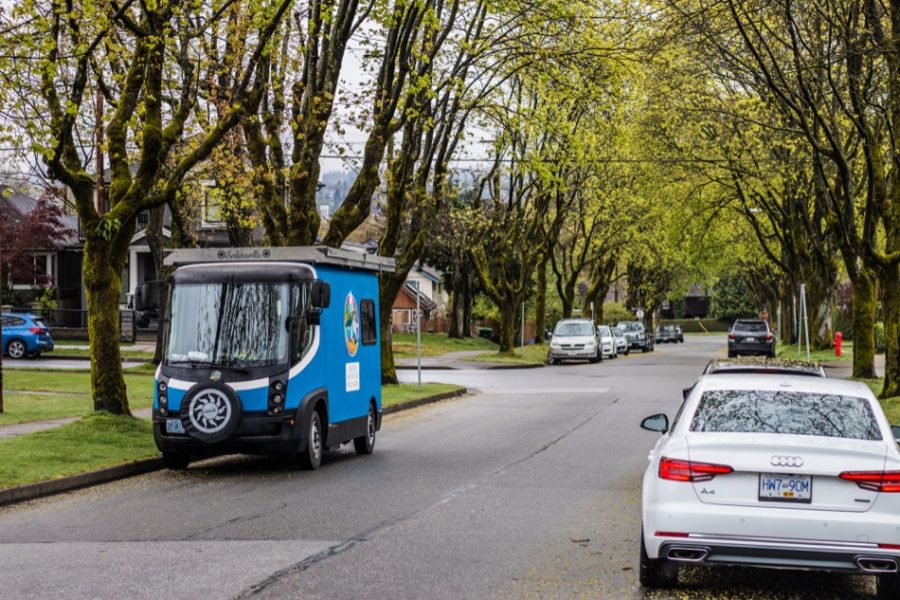
Images: Route Del Sol
This was where things became complicated it was time to add the solar power to the solar powered van. I’ll be the first to admit I’d have been completely lost if it wasn’t for the assistance of Brett Belan who had managed to manufacture his own DIY solar-powered VW bus two years prior to my project’s existence. He was an essential source of information and resources. I had met Brett the same way most people meet nowadays, on the internet. We spoke a couple times by email, then on the phone, until he very excitedly invited me to come and stay with him and his family in Ashland, OR to work on the build together. Although our relationship wasn’t as “intimate” as most of us would like when we meet someone on the internet, we became family very quickly.

Images: Route Del Sol
Before too long, with Brett’s guidance, I was spending my money like it was nothing else. First, $5000 on 40 kWh of lithium-polymer pouch battery cells, which when configured correctly in a battery bank extended my overall range to 200 miles. Next $7000 on an Outback Radian 8kw inverter and $1500 on a couple of high powered Outback FM-80 solar charge controllers. A never-ending list of purchases was accumulating as the balance of the project’s funds disappeared before my eyes. I learned very quickly that converting a vehicle like this isn’t cheap, especially spending your own hard earned cash. Nonetheless we persevered, deciding the quickest and most functional way to add solar power to the van was to secure an off grid EV charging station to the roof. Using 24 custom sunpower maxeon cell (16 x 6 cells) semi flexible 330w solar panels ordered from a factory in china, we designed a solar array that could unfold to three times its surface area. Using readily available molded aluminum we framed up 6 sets of three panels creating solar draws that allow the extra panels to slide away when the vehicle is driving. When stationary we would deploy these panels to accumulate their energy into the extra 40 kWh battery bank, and when the energy levels are sufficient in this bank, we would transfer the energy into the main 80 kWh drivetrain pack, a capacitor system of sorts. We achieved this by using a 40 amp enelX Juicebox electric vehicle charger, plugging it into the already existing standard J1772 charging port – found on most modern non Tesla electric vehicles – which is attached to the on board 7kw proprietary battery management system. We essentially created a self charging, proprietary system dodging hack. The crucial link to trick the van into allowing us to charge off of the sun’s energy, it was far from perfect, but it worked.

Images: Route Del Sol
After the van was somewhat functional, the interior needed some attention, we went to work creating a livable space – big enough to support at least two humans on the road. Equipped with a queen size bed, a table seating about six comfortably, a shower and composting toilet, a fully electric kitchen with hot water on demand, loads of bulkhead storage, plenty of under-seat stowage and a huge front cabin, the rig was finished off with a cedar veneer and most importantly, a spot for my surfboard. After spending the best part of $60K, my entire life savings and two of the hardest working months of my life, I was at that point in time the owner of the world’s most powerful, fully solar-electric campervan.
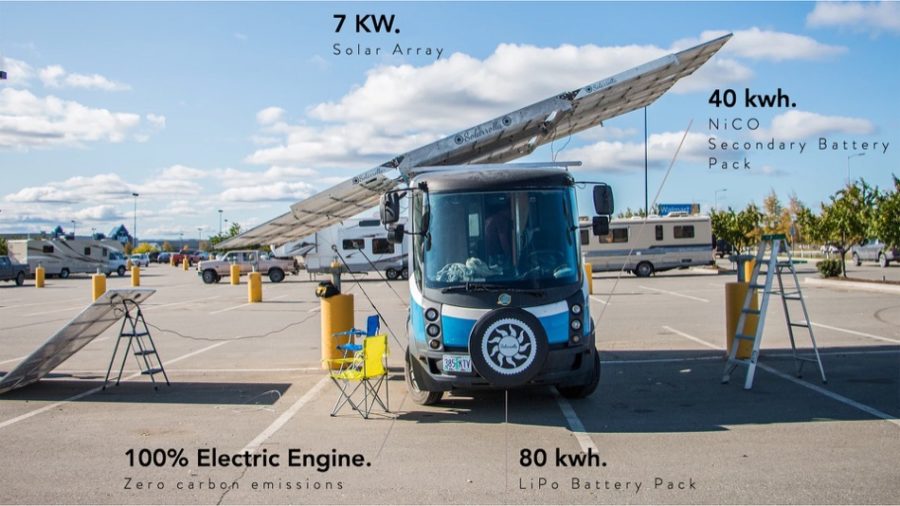
Images: Route Del Sol
I have since put the van to its test by driving it from the Arctic Circle on the Dalton Highway all the way down to Baja California in Mexico. The experience has been absolutely incredible, I could have never imagined a journey like the one I have been undertaking. Even if I had certain expectations for this journey they have been exceeded. I wish I could say the trek, up until now, has been without major hiccups, but in fact there have been many. Most recently in Cataviña B.C., the panels were ripped from the roof in a catastrophic windstorm while simply cruising down the highway. Every single one of the panels suffered damage to the point at which the accident has prevented the voyage from continuing, I refuse to see this as a hurdle, I’ve learned that it would weaken my experience to see this any other way than an opportunity to improve. It is a chance to learn a new skill or technique to overcome such situations which will always present themselves to those of us who dare to go and find them.
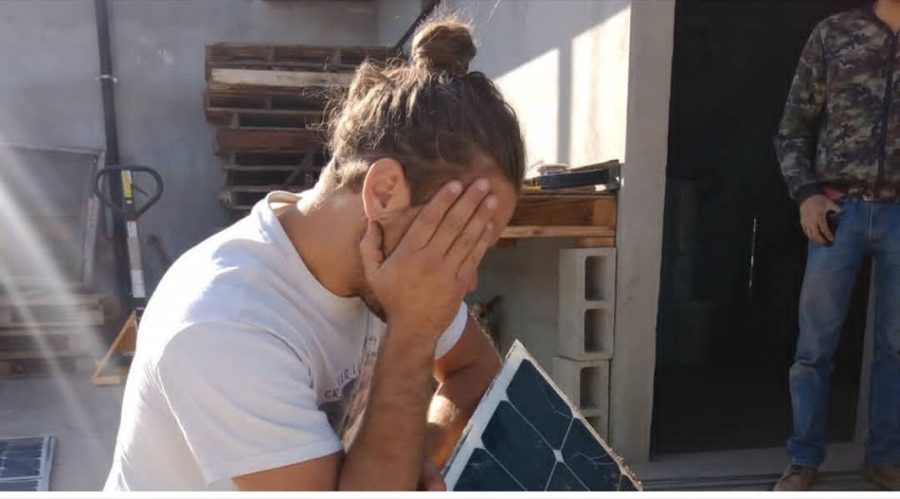
Images: Route Del Sol
Currently, the van is in Mexico awaiting the reopening of the USA border – when the COVID-19 related ‘Nonessential Travel’ ban is lifted – in order to venture to Miami and be outfitted out with its brand new solar array – a gift from Galt Energy – along with a new upgraded interior and other major upgrades which are being sponsored by a friend and follower of the project Shane Merril Facio and his company ACCU Signs. These improvements wouldn’t have been possible nor necessary unless the accident happened in the first place, so there’s even more reason to see the glass half-full.

Images: Route Del Sol
There have been many points so far in the adventure that I have found myself thinking I am absolutely nuts. Even from the early days, telling people about my plans to build a solar-powered campervan to drive from Alaska to Argentina, they’d look at me like, “Oh yeah, go on then…”. Instead of believing their doubts, I focused on those who have gone before me, people like Nikola Tesla, who had pitched insane ideas to friends and investors, things like: radio waves, X-Rays and alternate current energy. These ideas were obviously alien to whomever’s ears it fell upon, but doubt was never a factor in Tesla’s mind, ultimately he knew he had great ideas and took it upon himself to make them a reality. If there is to be a point to this whole story I’d want it to be something like this: If there’s a trip you’ve always wanted to take or a project you never thought you had the skills to accomplish, I want you to know that others who have gone before you did so to show you there is always a way to achieve something absolutely incredible with the time you have on this planet. If you can endure the chaos and doubt you too will be rewarded for your energy. So this is my story of how I did just that. Realizing my craziest idea yet, “Alaska to Argentina in a solar-powered campervan”.

Images: Route Del Sol
Since departing for my journey, I’ve learned to overcome many obstacles, for example: Once when I was charging the van in a Walmart parking lot in Fairbanks, AK – coming from a trip up to the arctic circle, a weld from one of the arms of the solar array snapped. This left the entire structure dysfunctional, making the van up to 60% less efficient at pulling in the sun’s energy. I limped my way through to a town called Whitehorse, YT where I was able to employ a welder who could re weld our array back together, it turned out to not be so bad after all, help was less than a week away and I kind of wished I just enjoyed the whole experience more rather than stressing about something that was out of my control. Another more chaotic time, an unforeseen October snowstorm in northern British Columbia left me with no food, energy and definitely no cell reception. It took more than a week to charge the batteries sufficiently enough to crawl to the next town, heading south again. Whenever I tell this story to people I always find myself saying, in hindsight it was a really fun time, but at the time it seemed a little too on edge, perhaps the moral of these stories is to just enjoy the entire journey.

Joel is the pilot, visionary and founder of Route Del Sol. With a background in science and climate change adaptation, he knows that the world is struggling to transition into a more sustainable future, so he threw away his traditional life and constructed Route Del Sol to bring about a change for the better (and have one hell of a time doing it). He’s a surfer, avid explorer, newly appointed electrical whiz, academically gifted and a socially inclined human.
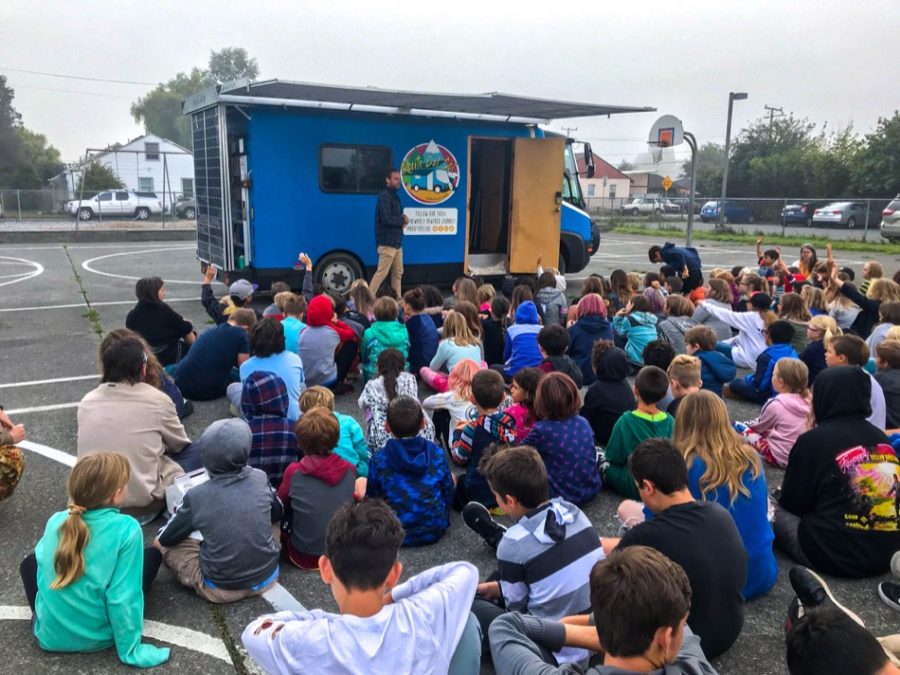
Images: Route Del Sol
Recently, the Route Del Sol cargo van conversion had an accident during transit and is in need of recovery and repair.
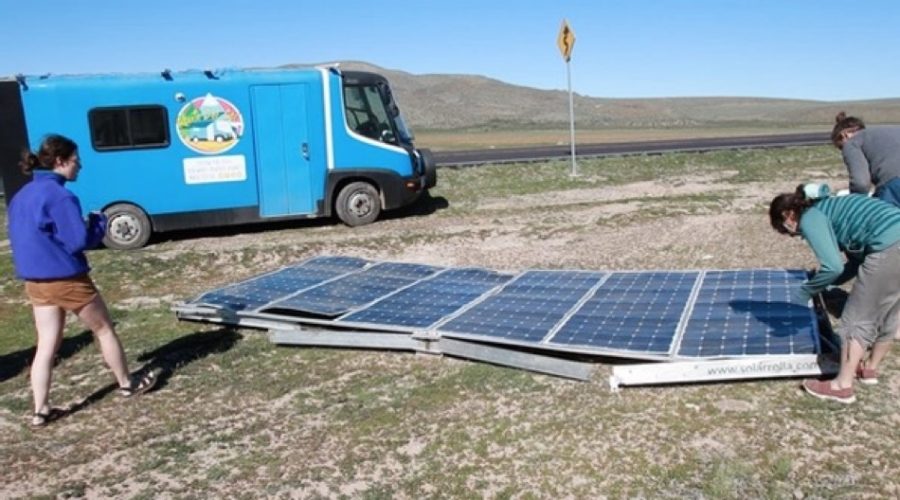
Images: Route Del Sol
If you’d like to become part of the rebuild, you can join the Route Del Sol Patreon, or donate any amount you’d like over at their recovery effort page.

Images: Route Del Sol
VIDEO of the Route Del Sol Solar-Powered Motorhome
Learn more
- Route Del Sol website
- Route Del Sol/Instagram
- Route Del Sol/YouTube
- Support the REBUILD of Route Del Sol via Patreon | Recovery Effort | Merch
Our big thanks to Joel Gregory Hayes and the Route Del Sol team for sharing🙏
You can share this using the e-mail and social media re-share buttons below. Thanks!
If you enjoyed this you’ll LOVE our Free Daily Tiny House Newsletter with even more!
You can also join our Small House Newsletter!
Also, try our Tiny Houses For Sale Newsletter! Thank you!
More Like This: Tiny Houses | Van Dwelling | Vans | Van Life | Video Tours
See The Latest: Go Back Home to See Our Latest Tiny Houses
This post contains affiliate links.
Alex
Latest posts by Alex (see all)
- Escape eBoho eZ Plus Tiny House for $39,975 - April 9, 2024
- Shannon’s Tiny Hilltop Hideaway in Cottontown, Tennessee - April 7, 2024
- Winnebago Revel Community: A Guide to Forums and Groups - March 25, 2024




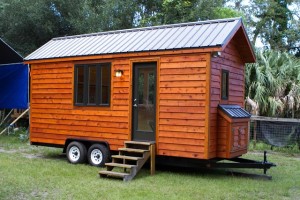

What’s missing from this story is how long it takes to charge up the batteries using only el sol. and the average time in between movement, because not all days are sunny
what about pics of the inside. Great to have solar powered but is it livable motorhome?
As the engineering VP of a solar power development company I would venture an educated guess about the time to recharge the batteries. First, it depends on what the DoD (depth of discharge) is when you start. Most Tesla owners tell me they rarely pull their batteries down more than 40%. I’ll guess this is not as much as this RV would be discharged, but if I were driving a vehicle with 200 mile range I’d start looking for somewhere to park and get charged up after about 100 miles. So, let’s guess the batteries are 75% discharged, meaning they need about 90 KWh. The solar array is 7 KW and on the Left coast I think they can count on at least 4.7 hours of noon time equivalent insolation (solar energy) on most days. That would be 4.7 X 7 kW = 32.9 kWh and allowing for a fixed array, not tracking the sun, they net energy harvested would be around 28 kWh. That would require 90 / 28 = 3.21 days. I’d also assume you would need to use a little of that energy to live during the charging period so maybe round that up to 4 days. Does 150 miles travel every 4 to 5 days sound like reality. Think I’d want me a propane powered generator for a backup, but I guess that would defeat the purpose of this experiment.
As someone who has contemplated doing this for a newbie, he did very well.
Someone thinking of it should start with a far lighter vehicle and keep it aero. Just by doing those you’d need 50% of the solar.
A light tow vehicle and a light aero solar living in trailer is another.
I’d also have a 2 blade Wind generator which takes little space and can charge 24hr/day when there is wind.
This can be a great way to live traveling around.